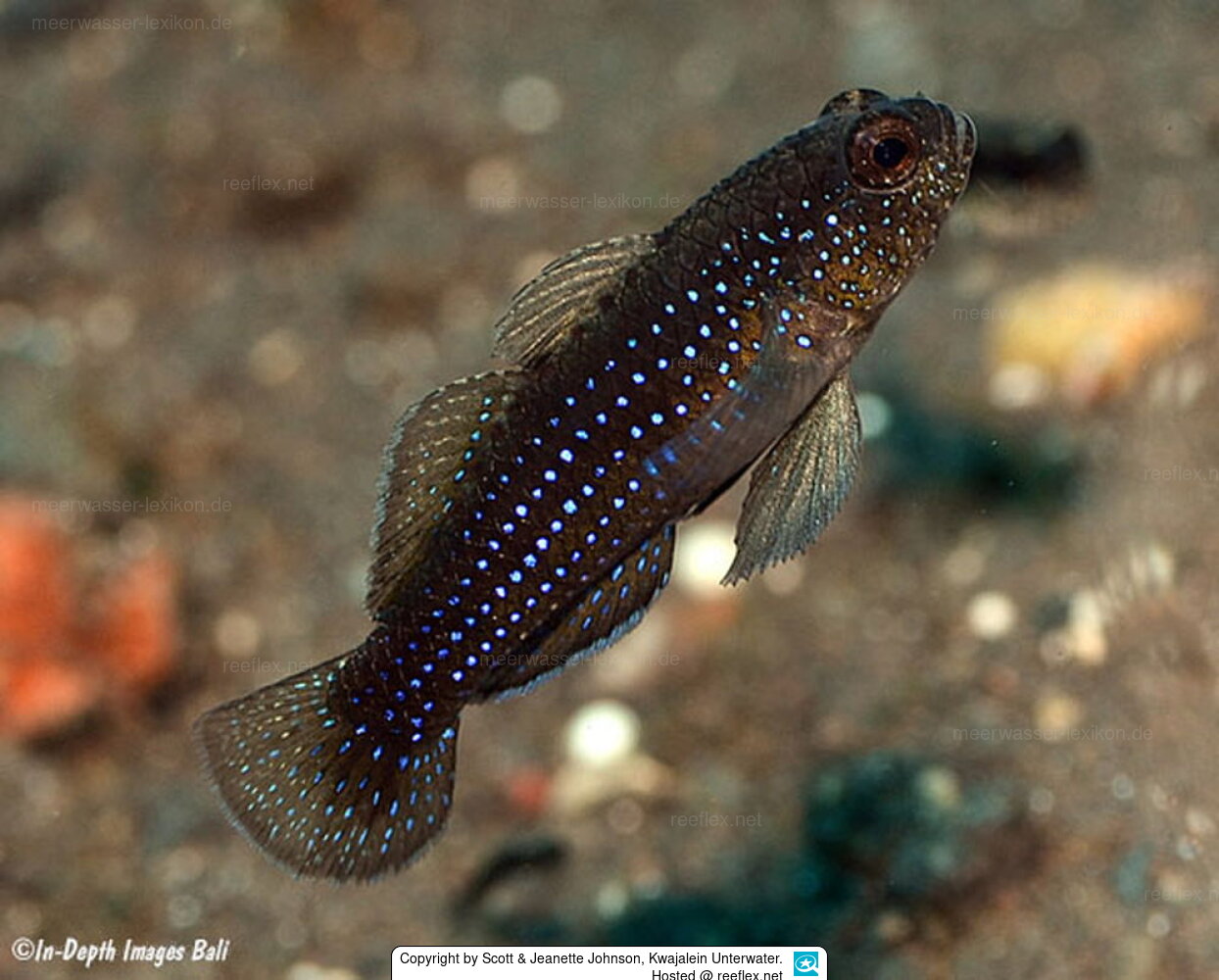Info
Found on algal-coated reef rock and rubble of inner flats and turbid lagoons
Synonyms:
Asteropteryx semipunctatus Rüppell, 1830
Asterropterix eumeces Pietschmann, 1934
Asterropterix semipunctata Rüppell, 1830
Asterropterix semipunctatus Rüppell, 1830
Asterropterix semipunctatus quisqualis Whitley, 1932
Asterropteryx semipunctatus Rüppell, 1830
Eleotris miniatus Seale, 1901
Gobiomorphus hypselopteryx Pietschmann, 1934
Gobiomorphus robustus Pietschmann, 1934
Priolepis auriga Ehrenberg, 1871
Prioolepis auriga Ehrenberg, 1871
Jumping guard
A jumping guard prevents (nocturnal) fish from jumping out.
Wrasses, blennies, hawkfishs and gobies jump out of an unprotected tank in fright if their night rest is disturbed, unfortunately these jumpers are found dried up in the morning on carpets, glass edges or later behind the tank.
https://www.korallenriff.de/en/article/1925_5_Jump_Protection_Solutions_for_Fish_in_the_Aquarium__5_Net_Covers.html
A small night light also helps, as it provides the fish with a means of orientation in the dark!







 Scott & Jeanette Johnson, Kwajalein Unterwater
Scott & Jeanette Johnson, Kwajalein Unterwater


















